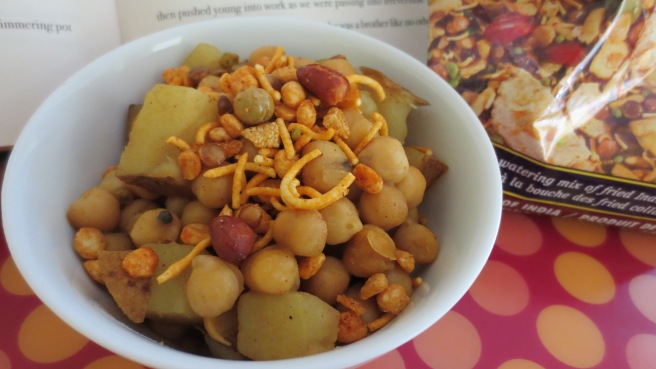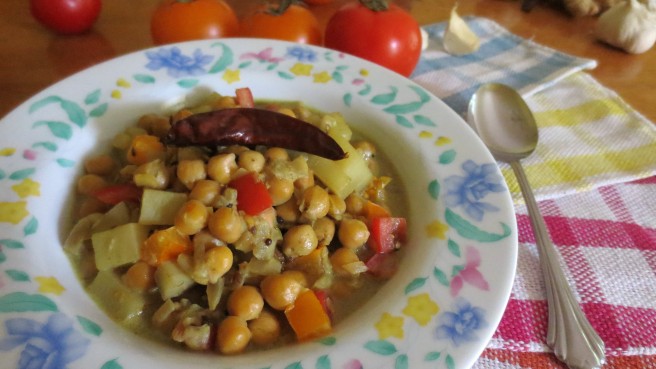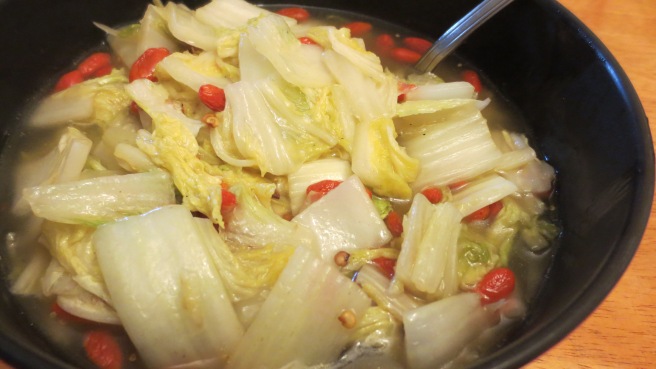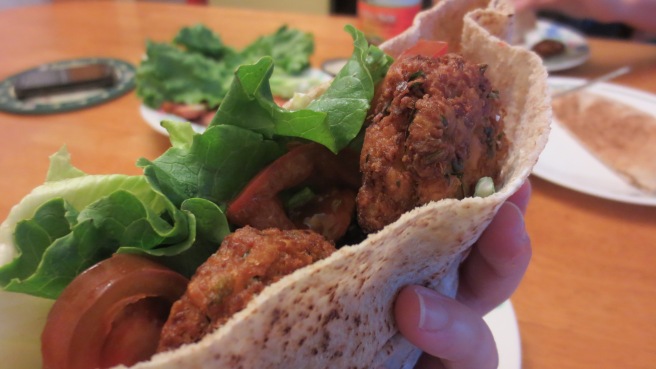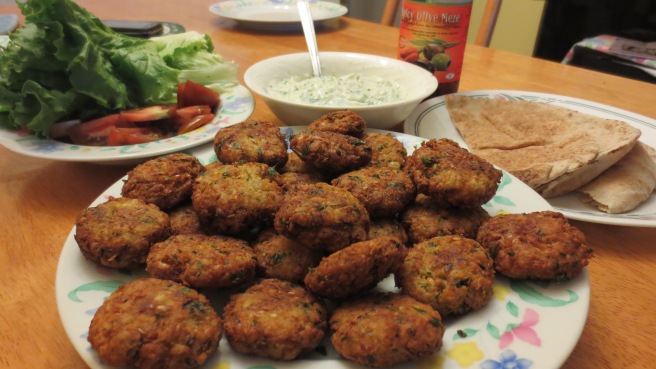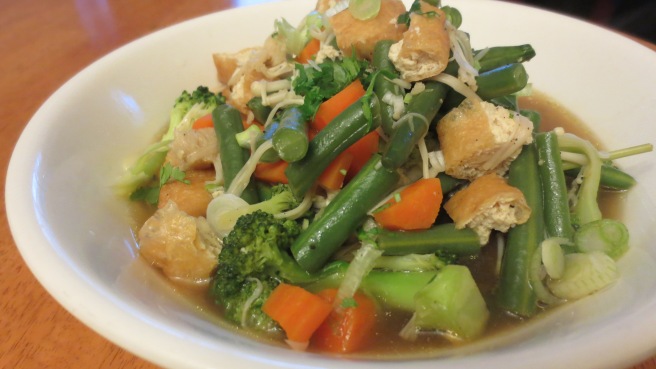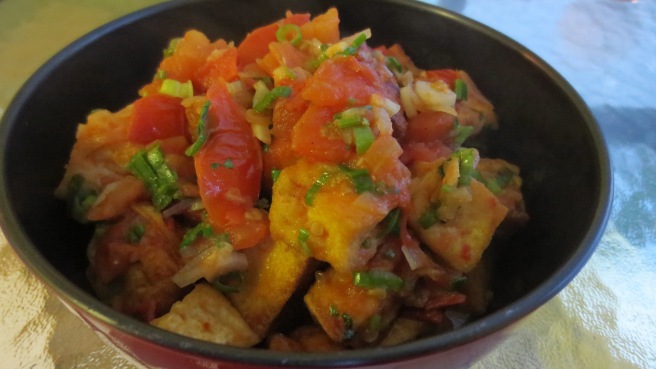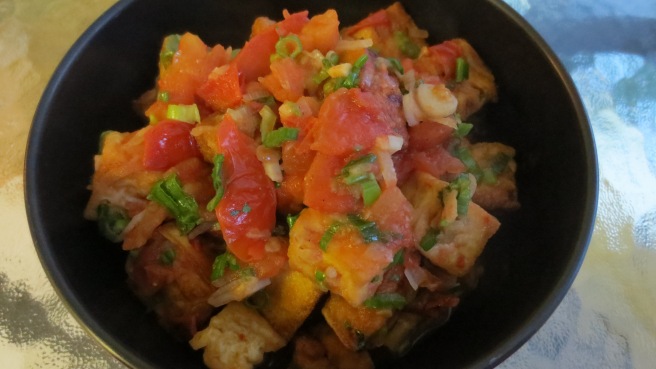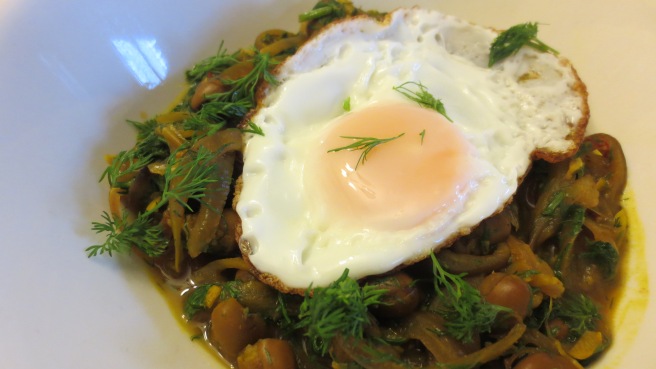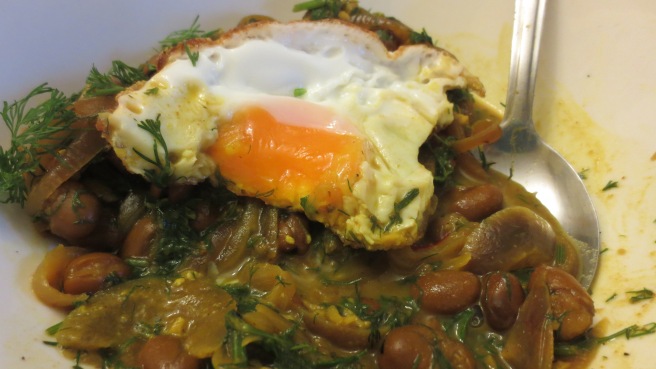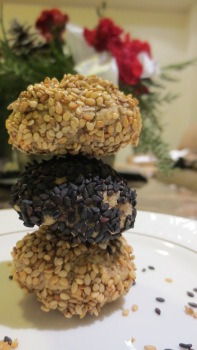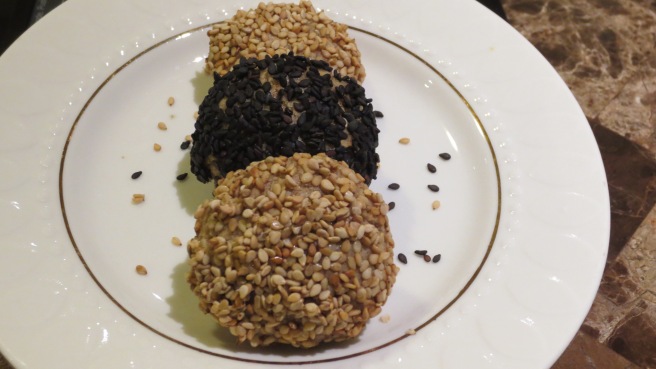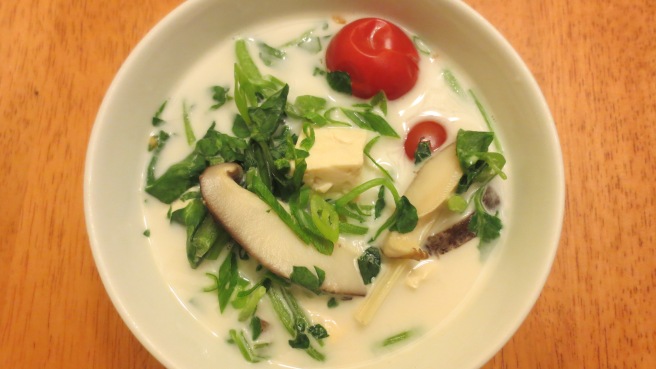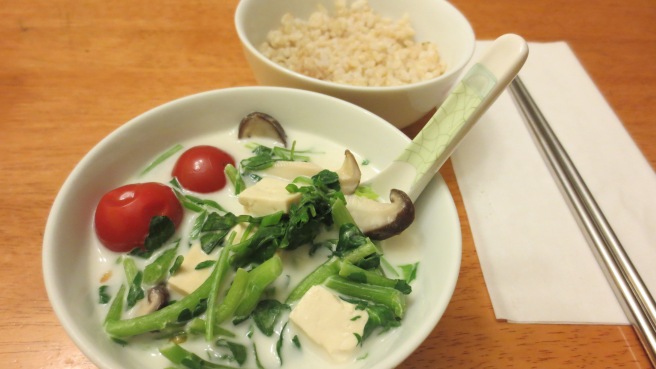Have you tried it yet? Huy Fong Foods Chili Garlic Sauce.
I got a small bottle a few days ago and it’s already almost half gone. Yes, it is that good.
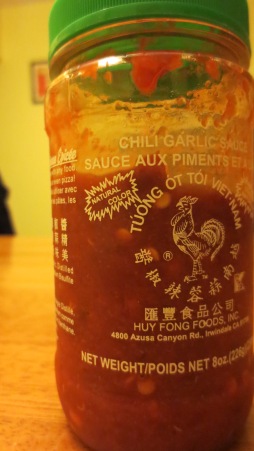
The ingredient list is short: chilies, salt, garlic, vinegar, a couple of preservatives and a thickener. The taste is nothing short of delicious. It’s not super spicy, and the garlic and vinegar gives it a depth that cannot achieved with chili peppers alone. I used it with stir fried rice noodles, and now it’s made its way into my eggplants.
This is a simple recipe, think weekday meal in a pinch. The soft eggplant is a perfect “sponge” for the chili garlic sauce. I imagine green beans, asparagus, and carrots would also do well here (although perhaps not altogether in one dish).
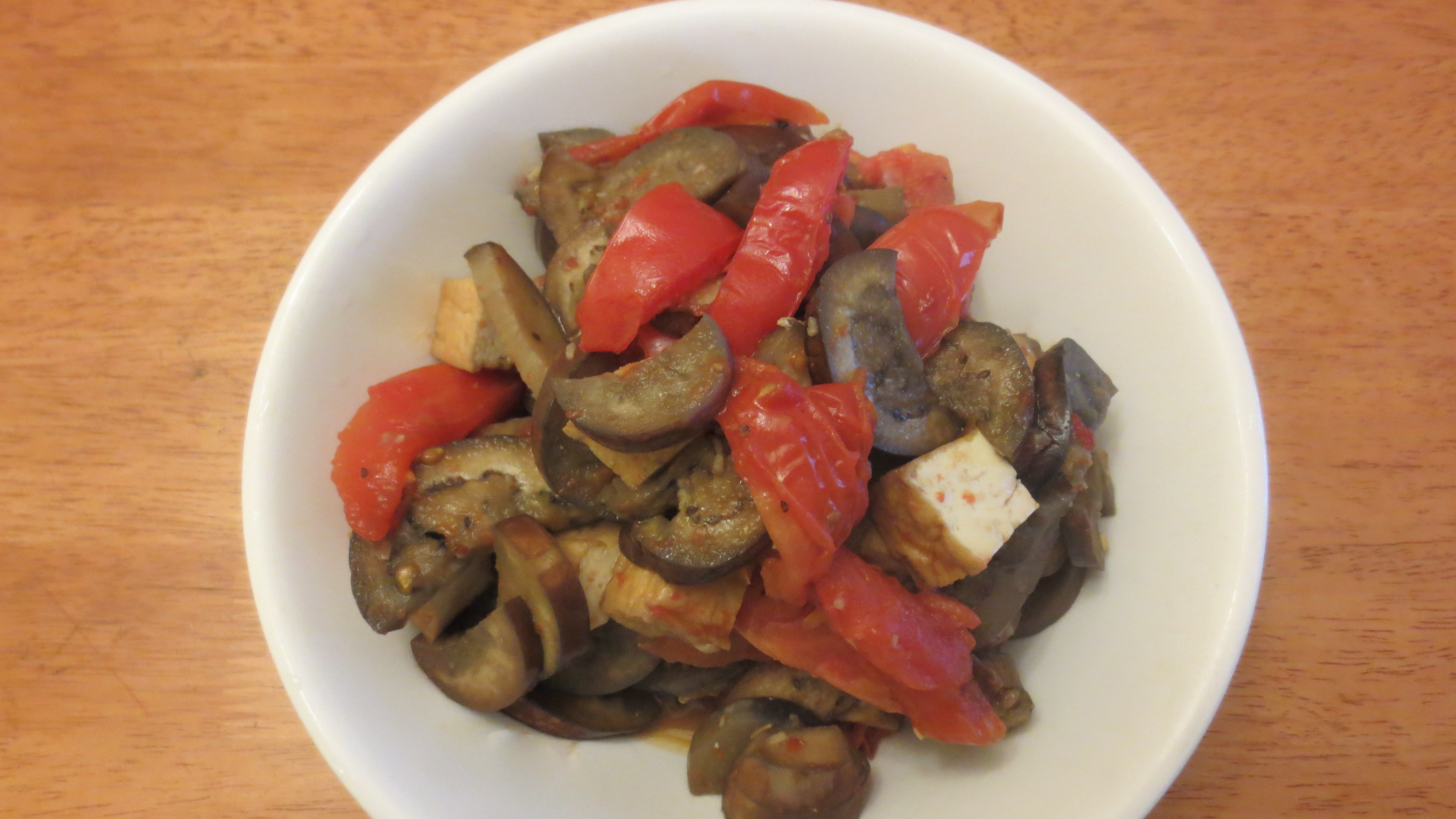
Eggplant with Chili Garlic Sauce
Serves: 3-4
Ingredients
- 2 Chinese eggplants (the long, skinny kind), sliced
- 1 tsp salt
- 2 tbsp vegetable oil
- 2 cloves garlic, minced
- 2 tbsp chili garlic sauce (for moderately-spicy, adjust as needed)
- ~400 g fried tofu, cut into cubes
- 4 Roma tomatoes, cut into 1/8th wedges
- 2-3 tbsp water for cooking
Method
- In a large bowl, mix together the salt and eggplant, allow them to sit for 15 minutes while you gather the rest of the ingredients.
- In a wok or large saute pan, heat up the vegetable oil over medium-high heat. Add garlic and chili garlic sauce and cook until fragrant.
- Add eggplant and tofu, stir to coat in the yummy sauce. Add 2-3 spoonfuls of water to prevent burning. Cook for ~ 8-10 minutes.
- Add tomatoes and cook for another 5 minutes. Taste and adjust salty/ spicy level as desired before serving.

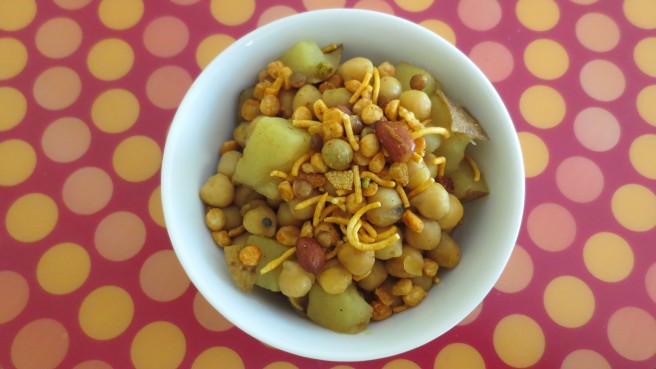 Some recipes in this book are a fusion of Indian and Ugandan cuisines. However, I think this dish stayed true to its Indian roots. The tamarind and date paste provides a sweet and sour backdrop and the chili gives just enough heat to warm you up on a cold day. The garnish on top is Bombay mix, a salty, sour, and spicy mixture of fried peas, peanuts, lentils, and chickpea flour noodles typically eaten as a snack, or as part of a meal. I got mine from the Real Canadian Superstore in Vancouver.
Some recipes in this book are a fusion of Indian and Ugandan cuisines. However, I think this dish stayed true to its Indian roots. The tamarind and date paste provides a sweet and sour backdrop and the chili gives just enough heat to warm you up on a cold day. The garnish on top is Bombay mix, a salty, sour, and spicy mixture of fried peas, peanuts, lentils, and chickpea flour noodles typically eaten as a snack, or as part of a meal. I got mine from the Real Canadian Superstore in Vancouver. 